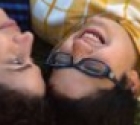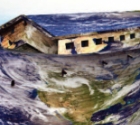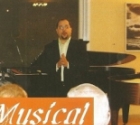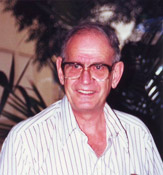
At the Bible Lands Museum in Jerusalem the magical and mystical mysterious world of Jewish incantations, spells, magic, curses and oaths are displayed in amulets, hamsas, jewelry, manuscripts, books of spells, and other mystifying artifacts and objects.
In the ancient and medieval worlds Jews were reputed to possess much knowledge about magic: amulets and spells to heal from sickness or harm one’s enemies, mystical incantations to ascend to heaven or bring angels down to earth, and information about the beneficent angels who assisted humans in their fight against the demons of illness and madness. Jewish magic has been part of Jewish folk knowledge and elite rabbinic practice through the years.
In antiquity there flourished among Jews and other nations of that era a widespread literature of magic and mysticism. Those people had a fear of the unknown and had turned to supernatural and magical forces, the magic of spells and amulets and incantations to alleviate and solve their personal troubles, by the performance of physical rituals and by the employment of magical herbs as amulets or potions. Written testimony to the magic formulae in Jewish literature can be found in the Bible, the Mishnah, the Talmud, and the Midrashim - and in archeological finds, i.e. in Qumran a fragment of a scroll was found containing magic compositions that were written in the Hasmonaean era.
The magic texts written on amulets and other artifacts, formulae written in sacred books that were to protect man were also meant to find favor with others, win love and admiration, social success and above all to cure one of illness. Healing of illness was usually done in the fashion of expulsion of evil spirits, demons and the evil eye through incantations, religious rites and wearing amulets written for the purpose of curing illness of all sorts – "May the evil spirit, the shadow-spirit, and the demon, both male and female depart from one's body." Also mentioned are the names of the angels or deities in which the spells are pronounced; Jewish texts frequently refer to the angels Michael, Gabriel, and Raphael. The use of magical powers was seen as normal during the Talmudic era, and it was sanctioned so long as the person involved stood within the rabbinic community and used magic for purposes accepted within rabbinic religion.
Occasionally an incantation that was recited by the sages was directed against a specific disease such as malaria which was prevalent in that era, and the Talmud contains varied prescriptions for treatment of the disease. In the Babylonian Talmud, Gittin 67b there is the distinction made between 'one-day malaria', ‘tertian malaria' and 'feverish malaria'.
www.sacred-texts.com/jud/jms/jms05.htm
The symbolic hamsa hand (Arabic) or hamesh hand (Hebrew) is an ancient and still popular amulet for magical protection from the envious or the evil eye and is also known to draw positive energy, happiness, riches and health. The hamsa (semitic root meaning five) includes five digits and symbolizes the Creator’s protective hand and refers to the digits on the hand. An alternative Jewish name for it is the Hand of Miriam, in reference to the sister of Moses and Aaron. Some hamsas contain images of fish; "the water covers the fish of the sea so the eye has no power over them (Berakhot 55b)." Some hamsa artifacts have the colors red and blue, both of which are said to thwart the Evil Eye. The symbol of the hand, and often of priestly hands, appears in kabbalistic manuscripts and amulets, doubling as the letter 'SHIN', the first letter of the divine name 'Shaddai' (one of the names referring to God). www.myjewishlearning.com/beliefs/Issues/Magic_and_the_Supernatural/Practices_and_Beliefs/Amulets/Hamsa.shtml
Among the demons best known by the sages was Lillith. According to the Midrash, she was considered to be Adam's first wife and when they parted she pledged to cause great harm to women in childbirth; she is a female demon of the night that supposedly flies around searching for newborn children either to kidnap or strangle. Also, she sleeps with men to seduce them into propagating demon sons. Lilith abounds in many mythologies, which causes difficulty in pinpointing her exact origin. A preeminent mythology is the Jewish folklore, or the Zohar, the book of splendor, a Kabbalistic thirteenth century meditation on the Old Testament, which establishes the Hebraic myth of Lilith, The Kabbalah further enhanced her demonic character by making her the partner of Samael (i.e. Satan) and queen of the realm of the forces of evil. She represents the deeper, darker fear men have of women and female sexuality.
www.themystica.com/mystica/articles/k/kabbalah.html
Note: The appalling mortality rates of women in childbirth and of newborn children in the Talmudic era lay behind the terror of the demon Lillith.
According to some rabbinic sources, the demons were believed to be under the authority of the king of the netherworld, either Asmodai or, in the older Haggadah, Samael ("the angel of death"), who kills with his deadly poison. Occasionally in Jewish texts a demon is called "Satan": The reality of demons was never questioned by the Talmudists and the later rabbis; most accepted their existence as a fact. Nor did the medieval Jewish scholars question their reality; demons were still dreaded in medieval Jewish folklore, as documented in the 13th century Sefer Hasidim.
According to rabbinical theologians there were three types of demons – Shedim (devils) the Mazzikim (harmers), and the Ruah ("spirits"). And there are a host of other minor demons and spirits written in the Talmud; the evil creatures that cause migraines (Ruah Palga – Gittim 68b); the demon Ketev mentioned in the Psalms 91-6 and Deut. 32-24 that is responsible for intestinal diseases, especially in the summer months, and RuahTazzazit that attacks animals and causes rabies and other convulsions (Yoma 83b).
Demons and evil spirits were thought by the superstitious to be innumerable. "Their numbers outweigh the number of humans on earth. If men were able to see them, none could stand the sight." (Berakhot 6a).
The names of angels that have magical apotropaic properties frequently appear on amulets, magical inscriptions and formulae. In the bedtime ritual, Kriat Sh'ma al ha-Mitah, the angels Michael, Gabriel, Uriel and Raphael are invoked for protection through the night.
This thought-provoking exhibition at the Bible Lands Museum combines archaeology, folklore and superstition in an all encompassing display:
Bible Lands Museum, Jerusalem
25 Granot Street, Jerusalem.
Tel: 02 561 1066 - Fax: 02 563 8228
Norman A. Rubin, author, has been a free-lance writer for the past twenty years writing on various subjects - Near East culture and crafts, archaeology, fantasy; religious history and rites, travel - mainly historical, coinage, a bit of politics, etc. - writing for Net sites and magazines worldwide. See 'google.com' under the author's name for a review of his written work.
Website:
ADDITIONAL BIBLIOGRAHY:
1) Exhibition and Catalogue 'Angels and Demons' – Bible Lands Museum, Jerusalem
2) The Golden Bough (a study in Magic and Religion) Sir James George Frazer
3) The Book of the Bible – Eunice Riedel, Thomas Tracy, Barbara D. Moskovitz
4) The Bible as History – Werner Keller
5) Exhibition 'Illness and Healing in Ancient Times' – Ofra Rimon, Hecht Museum, Haifa
 A PLACE OF THEIR OWN
A PLACE OF THEIR OWN THANK YOU!
THANK YOU! DEAR EDITOR 156
DEAR EDITOR 156 Art from the Heart
Art from the Heart Jewish Art Returns to Jerusalem
Jewish Art Returns to Jerusalem Musical Treats
Musical Treats Norman A. Rubin
Norman A. Rubin